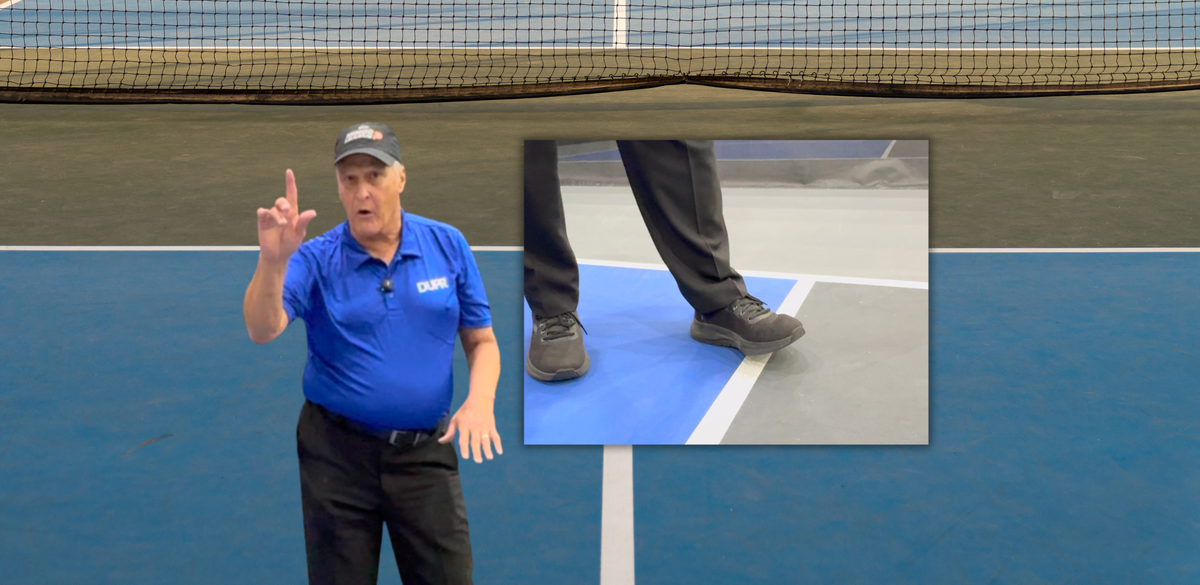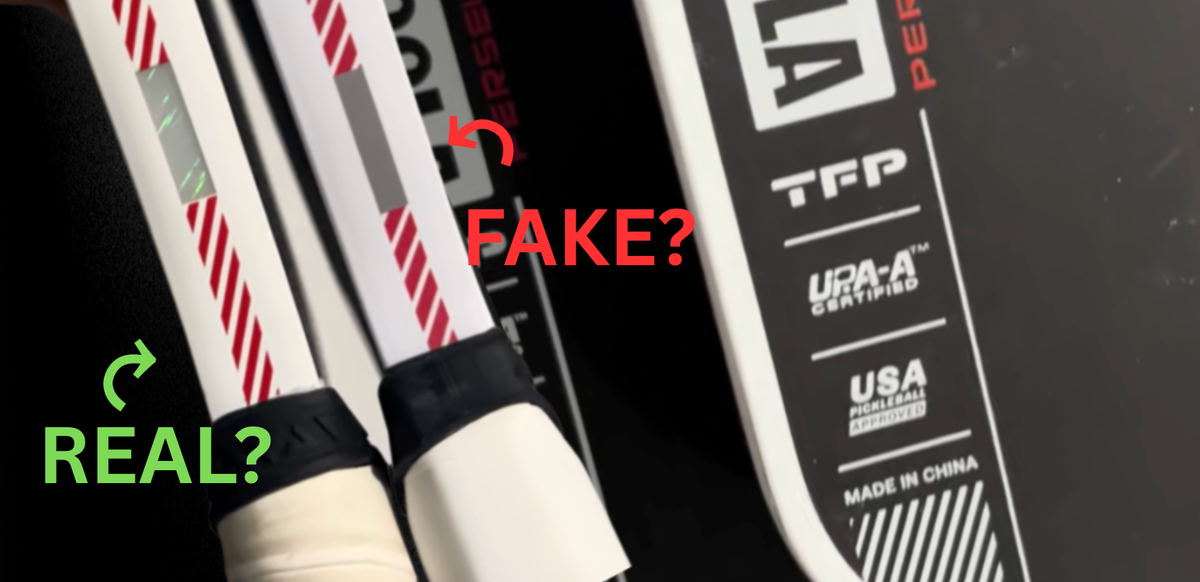Have you ever thought about owning a paddle that could give you reach, accuracy and even power all in one paddle? But wait, there’s more! Have you ever dreamed of owning the latest and greatest in pickleball paddle technology and manufacturing? Does this also sound like the best infomercial ever? Well, I’m pleased to tell you that it’s not all embellishment. Selkirk may have just created a new standard in the pickleball world with the new Selkirk Invikta.
This paddle is the newest addition to the AMPED line of paddles, and I couldn’t be more excited to try it out and review it for you. This paddle is a fascinating take on pickleball paddle design and today I will tell you all about it and compare it to the other AMPED paddles.
Keep in mind that Selkirk has sent me two of these paddles for me to review. I am not sponsored by them or anything like that. I just love their paddles. As you probably know by now, I like to be as transparent and authentic as possible with these sorts of things.
Let’s get into it!
First, a few words about AMPED
Back in late October 2017, Selkirk released a new line of paddles simply called “AMPED.” This line had four different versions including the Epic, S2, Omni, and Maxima. Since then, these paddles have grown in popularity and are very common to see at open play locations and tournaments.
Since then, Selkirk has released different versions of the AMPED series. I’ll be talking to you about the newest version, called the Invikta. For clarification, the Invikta is the exact same as the other AMPED paddles in the line but has a unique shape, unlike the others.

X5 core
The most important aspect to understand about the AMPED line is the core being used. Like most paddles being released these days, the core is made of polypropylene (polymer). Or in other words, plastic. It’s just plastic. But let’s stick with polymer because that sounds cooler.
Here’s the thing though, Selkirk has gone the extra 4 billion miles. Their X5 core is a patent-pending material that they’ve designed themselves. I don’t know all the juicy details, but the big difference between this paddle and others is that the core is much thicker than usual.

The Invikta is no different. Since it has the X5 core, it is much thicker than any other paddle on the market besides the other AMPED paddles. There’s a downside to this though that I’ll talk about later on.
The X5 core is soft and strikes true, but you don’t lose much power. That’s what’s so extraordinary about it. In terms of pickleball technology, it’s the latest and greatest.
FiberFlex face
The face used in the AMPED line is made of fiberglass. This face material is becoming much more popular probably due to its availability. Fiberglass faces are typically described as a spin material. You can impart more spin, but you lose some of the explosive impact or “pop” of a graphite face.
The paddle itself
If I had to give an elevator pitch about the Selkirk Invikta, this is what I would say: the Selkirk Invikta is a longer handle, power-oriented version of an elongated paddle like the Omni. That’s the easiest way to explain it. It’s the exact same height and width as the Omni, but with a longer handle.

This means that you get less paddle face than the Omni or similar paddles, but you get a longer handle for easier drives and smashes. I’ll talk more about why this is the case later on in the article.
Specifications
- Core: X5 polymer
- Face: FiberFlex fiberglass
- Average weight: 7.3– 7.7 oz (lightweight) 7.9 – 8.3 oz (midweight)
- Paddle length: 16.5″
- Paddle width: 7.375″
- Grip circumference: 4.25″
- Grip type: Selkirk ComfortGrip
- Handle length: 5.25″
- USAPA approved
This time around, Tyson McGuffin has helped create and champion the paddle and has been using it to much success lately. This is the guy who has one of the most brutal serves I’ve ever seen. I used to think that my serves were fast, but now it just seems like I’m throwing paper airplanes. Hey, don’t make fun of my paper airplane serve!
I definitely consider this an intermediate to advanced paddle. This is mainly due to its elongated feature and smaller horizontal hitting area. Beginners should focus on other paddles that have a wider face which will be more forgiving. If you’re having trouble deciding on a paddle, I dedicated a page for just paddle recommendations that you can check out.
As usual, the Selkirk Invikta is an extremely high-quality paddle that does exactly what it’s designed to do, destroy the ball and make your opponents cower in fear!
Ok, maybe not cower too much, but you know what I mean.
This paddle is specifically designed for the power player who still needs control and accuracy at the net. It’s a beautiful combination, and I’m pleased to say that it works. More on that later.
Visual design
In terms of the visuals, you can expect the exact same thing as the other AMPED paddles. Nothing has changed.
However, a lot of my readers commented on my previous reviews that the black material that made up the Selkirk logo was causing them some concerns. On the midweight version, the black material is still there, but it’s not as prominent as it once was in terms of how much it protrudes forward. The black material is not on the lightweight version.
Keep in mind that the signed version of the paddle by Tyson McGuffin is for the black midweight paddle only.
Midweight and Lightweight options
As you can see above, the Invikta comes in both a midweight and lightweight options. Most pros that I see playing with this paddle go with the midweight option. As you probably know, the heavier the paddle, the more power you have. But you sacrifice maneuverability and flexibility. A lot of recreational players that I’ve introduced Selkirk paddles to typically choose the lightweight option. In other words, people choose control over power which is a smart decision.
The two paddles that I received were 8 oz for the midweight and 7.7 oz for the lightweight. Of course, you will notice a significant difference between the versions, but it’s not huge. Since the Invikta is focused more on whipping and driving the ball, I would choose a weight based on what you think you and your wrist and arm can handle.
Let’s compare!
One of the best ways to describe the Invikta is to compare it to other paddles in the AMPED line. There are lots of similarities that I want to address. Also, if you’re looking to upgrade your paddle from another one in the AMPED line, this will be important for you.
Compared to the Epic or S2
Before we begin, I’m lumping together the S2 and the Epic because they are so similar. So whatever I say for the Epic also applies to the S2.
It’s true that the Invikta is considered an elongated paddle. But when you compared it to the Epic, you’re not sacrificing that much. Check this out:

The lens on my camera makes the Epic look much wider than the Invikta underneath it, but it’s really not that much wider. The Epic is 8” wide while the Invikta is 7.375” wide. So in reality, you’re only losing ⅔” in total, which is only ⅓” on each side! That’s it! But what you gain is ¾” in height! This gives you more reach than the Epic, while only sacrificing ⅓” on each side of the paddle.
If you’re an already accurate player and think you can sacrifice a bit of width, then the Invikta could be a great upgrade for you.
Compared to the Maxima
The Invikta is very similar to the Maxima because of its blade-like features. But it’s not entirely the same. The Maxima is still the accurate, power player’s paddle, but will have more reach than the Invikta. The Maxima is 17” long which is the maximum allowed by the USAPA whereas the Invikta only goes to 16.5”.

The Maxima gives you more reach, but less hitting area.
If you love your Maxima or other blade paddles similar to it, then there’s probably not much reason to upgrade unless you need more forgiveness.
Compared to the Omni
Out of all the AMPED paddles, the Invikta resembles the Omni the most. In fact, the Omni and the Invikta share the same height and width! But with one major difference. The Invikta comes with a longer handle. And since it comes with a longer handle but is the same height, this means that you get slightly less face area with the Invikta as you can see below.

The Omni is the one on the bottom.
So basically, if you’re currently using an Omni, then I have some great news for you:
- If you don’t like the smaller handle of the Omni, then you can upgrade and get a bigger handle.
- You’ll still get around the same amount of reach like you did with the Omni.
This what makes the Invikta so compelling. It allows you to get the reach of an elongated paddle especially if you choke down on the handle, but it gives you the power of a regular paddle when you choke up. Cool!
Performance
As I’ve alluded to before, this paddle acts like an aggressive form of an elongated paddle. You get most of the reach that an elongated paddle would give you, but you can also whip this paddle because of the longer handle. And believe it or not, that’s what the Invikta is all about, the handle.
It’s all about the handle
The #1 gripe I hear from people about elongated paddles is the short handle that they typically sport. In order to give people the maximum amount of paddle face possible, manufacturers will use a small handle to give players that room. But the problem is that it leaves a lot on the table, especially for advanced players.
Paddles with small handles make driving the ball extremely difficult. The reason is that your grip is so far away from the center of gravity. Selkirk has remedied this issue by giving you a longer handle. Now you can swing the paddle with much greater ease. Yes, it reduces the amount of paddle face you have, but now you’re able to do so much more.
With the Selkirk Invikta, you’ll be able to use your entire pickleball skill set including your ability to dig, smash, drive and dink.
But where it really shines is in your smashes, passing shots and general drives.
Like I said earlier, this paddle performs like an aggressive form of an elongated paddle. You can get the same kind of extended reach but with much more power. The reason why you get more power is that of the handle. You can whip this thing like crazy! Especially the lightweight version.
One important point to remember with paddles like this is that if you’re too slow on a backhand shot, the paddle will send your ball in the opposite direction. This has nothing to do with the Invikta, but with elongated paddles in general.
The reason this happens is that the longer a paddle is, the more angle there is as well. So the top of the paddle lags behind since it’s further away from the center point which is your hand. If you don’t initiate your backhand stroke quick enough, it may lag behind too much, and you’ll hit it off to the side.
Who’s it for?
The Selkirk Invikta is for players who want a bit more reach and added power to their drives and passing shots without sacrificing much in terms of forgiveness. As is the case with most pickleball paddle choices, you have to be willing to accept the tradeoffs. The tradeoff is you lose a bit of face area and width.
This is also a great paddle for people who want to start serving more aggressively. The lesser width of the paddle does not affect serving accuracy much considering that the paddle has to be underhanded and contact has to be below the wrist. And that leads to my next point.
Similar to other elongated paddles, the big challenge with using them involves the backhand. As you probably know, a proper backhand dink in pickleball involves cocking the wrist and making the paddle somewhat parallel with the ground.
Striking the ball this way is sort of like hitting a baseball. Instead of the paddle being nearly vertical like it is during the serve, you’re instead doing the opposite. Thus, the sweet spot is much, much smaller when you’re doing backhand dinks. This requires more accuracy and confidence in your play.
But the Invikta makes this easier than other elongated paddles since you’re only losing ⅓” on each side of the paddle. This is another benefit of using this paddle.
Basically, if you have any version of the Omni or other types of elongated paddles with a short handle, but you want more power, you are going to absolutely love the Selkirk Invikta. Why? Because it’s pretty much the exact same thing, but with a longer handle.
My only gripe
I mentioned a downside earlier that I would tell you about. I mean, what would a paddle review be without a gripe or two right?
Like I have said in my previous AMPED reviews, the paddle can be difficult to get used to if you’ve been playing with a standard polymer core and graphite face setup. The explosiveness of the graphite face feels very different than the thick, fiberglass face of the AMPED paddles. Conversely, this can be great for beginners, as they’ve never had any other paddle experiences before and don’t have those preconceived notions.
However, for advanced players, it may take some time to get used to the softness. But once you get there, you’ll most likely be thrilled with the paddle. Just keep that in mind in case you pick up an AMPED paddle. Also, not everyone has had this issue! I’ve heard from dozens if not hundreds of people at this point who have had enormous success with paddles in the AMPED line.
In closing
I hope that this review of the Selkirk Invikta has helped you out in your paddle picking process. I know that choosing a paddle can be an arduous task. I’ve written an article all about that process in case you’re having trouble. Thank you for reading and thank you for checking out the website! If you have any questions or comments, please leave them below.
Anuncie Aqui / Advertise Here
Sua marca para o mundo Pickleball! / Your brand for the Pickleball world!

 English
English  Spanish
Spanish  Portuguese
Portuguese  German
German  Italian
Italian  Japanese
Japanese  French
French  Polish
Polish  Russian
Russian  Netherlands
Netherlands  Hungarian
Hungarian  Turkish
Turkish  Videos
Videos  Pickleball Kitchen
Pickleball Kitchen








 English (US) ·
English (US) ·  Portuguese (BR) ·
Portuguese (BR) ·